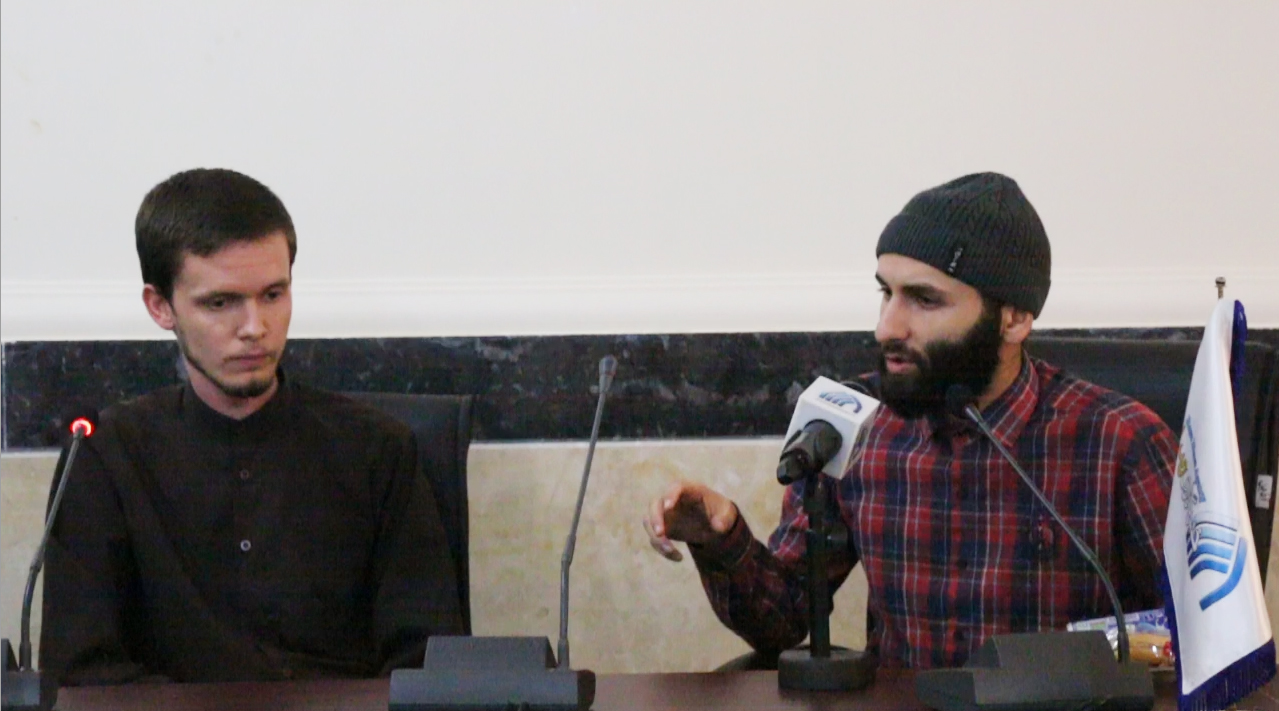
RNA – In an exclusive interview with Rasa News Agency, Dmitriy Kustov (now called Ismail), a Russian seminarian studying at al-Mustafa International University in Qom discussed various issues such as the impact of the Islamic Revolution and the words of the late Imam Khomeyni in regard to the spread of Islam in other parts of the world.
At the beginning of the interview, Ismail spoke about his journey to Islam. He was a history student in Russia and, after a careful study of the early history of Islam, he directly chose the Shi’ah school of thought.
Referring to the 1989 letter of Imam Khomeyni to Mikhail Gorbachev, the former General Secretary of the Communist Party of the Soviet Union, wherein he said “It is clear to everybody that from now on communism will only have to be found in the museums of world political history, for Marxism cannot meet any of the real needs of mankind,” Ismail said, “Imam Khomeyni wrote in a letter to Gorbachev that said that the place of communism is in the history museums. After the collapse of the Soviet Union, the Russian youth discovered the opportunity to freely investigate religion and the first religion they examined was the religion of their ancestors – Russian Orthodox Christianity.”
In response to a question about the spread of extremism among a large number of Muslims in Russia, this seminarian said, “After the collapse of the Soviet Union, in areas such as Tatarstan and Dagestan, where the ancestral religion of the people was Islam, the youth had the opportunity to learn more and to investigate about this religion but since their religion was Sunni Islam, the grounds of influence were provided by Wahhabi and Saudi missionaries. Takfiri extremists began to carry out terrorist attacks in different parts of Russia after converting to Wahhabism, including the kidnapping and killing of 334 people, including 156 children at a school [in the city of Beslan in 2004].”
After the Soviet Union collapsed due to the weakness of the central government, the Chechen people sought independence from Russia and in the midst of the battles, the Saudis saw an opportunity for them to spread their influence through the use of Wahhabi missionaries but the question arises as to why the people of the Caucasus, Tatarstan, Chechnya and other Muslim regions of the vast country (who were originally Sunni Muslims) were attracted to Wahhabism and how generally Wahhabism was attractive to these people.
In response to this question, Ismail said that Wahhabism became popular among them because of the lack of familiarity and knowledge among the youth of the Caucasus region in regard to pure Islam. After the collapse of the Soviet Union, they were given the opportunity to return to the religion of their ancestors, namely, Islam and they wanted to gain spirituality but they became ensnared in the trap of Wahhabism and extremism due to the lack of sufficient resources to study Islam correctly.
He continued, saying that at that time, there were no programs and classes to learn about Islam. Hence, the Wahhabis, by using translations and interpretations of the Quran, were able to find an opening among the Muslims of Russia. The Muslims of Russia, who had been deprived of Islam for many years and were thirsty for Islamic education, had gained access to Islamic sources (at least in appearance) through the Wahhabi muftis.
In response to the question “how can a person who considers himself a Muslim massacre innocent people?” Ismail said that after the collapse of the Soviet Union, the Chechen people initially had a nationalistic approach and only fought for independence from Russia and their hostile and violent acts were for the establishment of an autonomous region or an independent country but with the arrival of Saudi-Wahhabi missionaries as well as the terrorist forces from Saudi Arabia, these actions found a religious and ideological approach.
Rasa News Agency
112/971